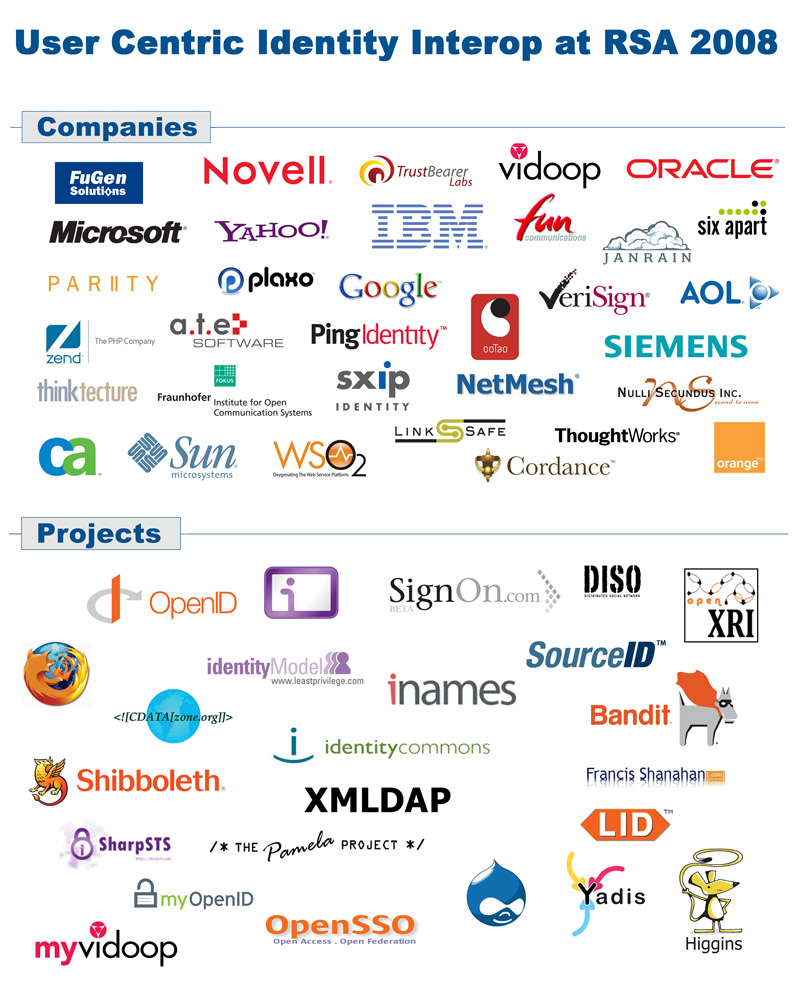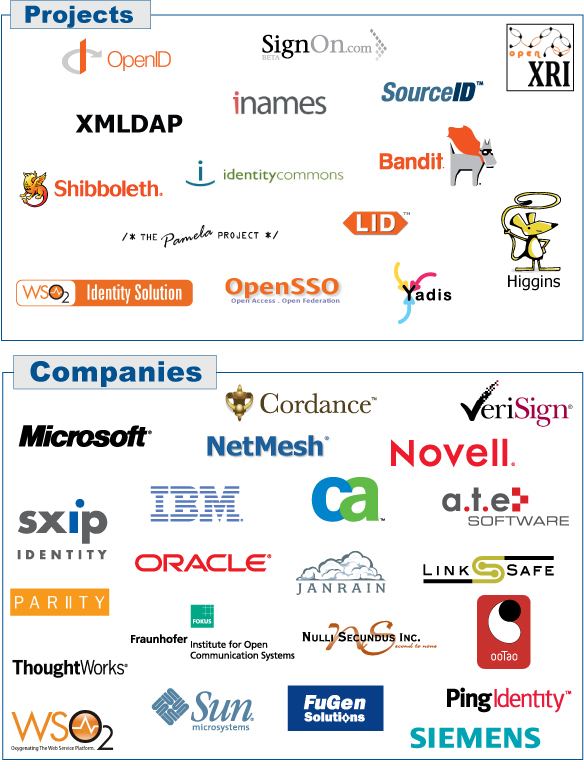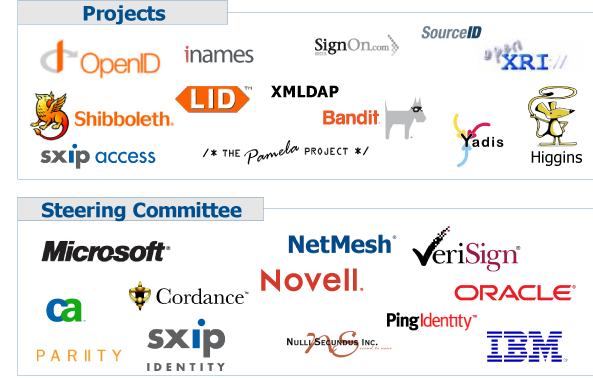Microsoft has published the third in a series of step-by-step guides on configuring AD FS 2.0 to interoperate with partner products. This guide describes how to configure AD FS 2.0 and Shibboleth to federate using the SAML 2.0 protocol. There is also an appendix on federating with the InCommon Federation. The guide is available in Word format and HTML. Thanks again to author Dave Martinez.
Category: Shibboleth
As Don Schmidt wrote this morning, Microsoft’s “Geneva” Identity Server product will support the SAML 2.0 protocol. Specifically, we will be supporting the SAML 2.0 IdP Lite and SP Lite profiles and the US Government GSA profile. Customers had told us that these SAML profiles are important to them and we’re responding to that feedback by implementing them in “Geneva” Server. Those of you who were at Kim Cameron’s “Identity Roadmap for Software + Services” presentation at the PDC got to see Vittorio Bertocci demonstrate SAML federation with “Geneva” Server to a site running IBM’s Tivoli Federated Identity Manager.
The “Geneva” Server is the successor to Active Directory Federation Services (ADFS). It will, of course, interoperate with existing ADFS and other federation implementations using the WS-Federation protocol. In addition, it adds WS-Trust support for issuing Information Cards, letting it work with Windows CardSpace and other Identity Selectors.
I’ll add that the SAML 2.0 support doesn’t stop with the server. SAML 2.0 is also supported by the “Geneva” Identity Framework — a .NET application development framework formerly known as “Zermatt” and “IDFX”, which likewise also supports WS-Federation and WS-Trust. In short, the same identity development framework components that are being used to build “Geneva” Server will be available to all .NET developers as the “Geneva” Identity Framework.
Finally, I’ll close by thanking the folks on the Internet 2 Shibboleth project, IBM, and Ping Identity who helped us with early interop testing of our code. You have been valuable and responsive partners in this effort, helping us make sure that what we’re building truly interoperates with other SAML 2.0 implementations deployed in the wild.
33 Companies…
24 Projects…
57 Participants working together to build an interoperable user-centric identity layer for the Internet!
Tuesday and Wednesday, April 8 and 9 at RSA 2008, Moscone Center, San Francisco, California
Location: Mezzanine Level Room 220
Interactive Working Sessions: Tuesday and Wednesday, 11am – 4pm
Demonstrations: Tuesday and Wednesday, 4pm – 6pm
Reception: Wednesday, 4pm – 6pm


Last night OSIS and the Burton Group held the third in a series of user-centric identity Interop events where companies and projects building user-centric identity software components came together and tested the interoperation of their software together. Following on the Interops at IIW in May and Catalyst in June, the participants continued their joint work of ensuring that the identity software we’re all building works great together.
This Interop had a broader scope along several dimensions than the previous ones:
- We welcomed new participants a.t.e Software, Fraunhofer, JanRain, LinkSafe, ooTao, Sun Microsystems, Siemens, and ThoughtWorks.
- We tested interoperation of OpenID software (including i-name software) in addition to Information Card software.
- Several kinds of interop between Information Card and OpenID software were demonstrated, including:
- OpenID providers implementing the OpenID phishing-resistant authentication specification using Information Cards to enable phishing-resistant sign-in to OpenIDs, and
- using OpenID Information Cards to supply OpenIDs to OpenID relying parties.
- Unlike previous Interops, the endpoints and testing results are all publicly available so that others can benefit from them.
- Many of the participants have committed to keeping their sites up beyond Catalyst to allow for continued public interop testing. For instance, Microsoft’s sites will remain up at http://www.federatedidentity.net/.
An excerpt from Bob Blakley’s insightful-as-always commentary on the Interop is:
The participants have posted their results on the wiki, and a few words are in order about these results. The first thing you’ll notice is that there are a significant number of “failure” and “issue” results. This is very good news for two reasons.
The first reason it’s good news is that it means enough new test cases were designed for this interop to uncover new problems. What you don’t see in the matrix is that when testing began, there were even more failures — which means that a lot of the new issues identified during the exercise have already been fixed.
The second reason the “failure” and “issue” results are good news is that they’re outnumbered by the successes. When you consider that the things tested in Barcelona were all identified as problems at the previous interop, you’ll get an idea of how much work has been done by the OSIS community in only 4 months to improve interoperability and agree on standards of component behavior.
Be sure to read his full post for more details on what the participants accomplished together. And of course, this isn’t the end of the story. An even wider and deeper Interop event is planned for the RSA Conference in April 2008. Great progress on building the Internet identity layer together!

I’ve been waiting to write about the user-centric identity interop at the Burton Group Catalyst conference until the Burton Group report about the event was published. Now it’s here!
At the interop we demonstrated interoperability between 7 Identity Selectors, 11 Identity Providers, and 25 Relying Parties. As Bob Blakley wrote:
The interop event was a milestone in the maturation of user-centric identity technology. Prior to the event, there were some specifications, one commercial product, and a number of open-source projects. After the event, it can accurately be said that there is a running identity metasystem.
The full report includes a list of participants and the software they brought to the table, an overview of the results achieved, as well as the issues identified through the interop. See Bob’s post for all the details!
The report also includes thank-yous, to which I’d like to make some additions: Thanks are due to Jamie Lewis, Gerry Gebel, and Bob Blakley of the Burton Group for sharing our vision for this interop, striving to make it the best that it could be, and tirelessly working the details until it came true. You truly helped the industry to come together in a valuable and significant way.
Also, while I appreciate Bob’s thanks for the work I put into the Open Specification Promise, there were many believers in and drivers of this important work at Microsoft besides myself, both from the Law and Corporate Affairs team and from the Federated Identity product group. This was truly a team effort.
I’m also happy to report that there will be a follow-on interop in Europe at the Catalyst conference in Barcelona, October 22-25, which will hopefully include even more participants and scenarios, including more multi-protocol interoperation proof points. Hope to see you there!
On Tuesday afternoon at IIW representatives from numerous Information Card projects sat down at the same table (actually, 3 tables so we would all fit :-) ) and systematically used our implementations together, exercising the different possible combinations. The session notes, as posted on the OSIS wiki, tell the story:
Notes from IIW 2007a
The OSIS group sponsored an Information Card interoperability connect-a-thon on May 15, 2007 as part of the Internet Identity Workshop 2007 A in Mountain View California. Participants collaborated to work through combinations of Identity Provider, Identity Agent, and Relying Party scenarios, in order to identify and workshop problems with interoperability. The following representatives were present and participated:
5 Information Card Selectors
- Ian Brown’s Safari Plugin
- XMLDAP
- Windows Cardspace
- Higgins IdA Native
- Higgins IdA Java
11 Relying Parties
- Bandit (basic wiki authentcation)
- Bandit (elevated privileges)
- PamelaWare
- CA
- XMLDAP
- Windows Live RP (used to obtain a managed card)
- Windows Live/single-issuer (where you can use the managed card)
- Oracle RP
- Identityblog RP (based on Rob Richards’ library)
- Identityblog helloworld token RP
- UW/Shibboleth
7 Identity Providers
- Higgins
- Bandit
- XMLDAP
- UW/Shibboleth
- LiveLabs
- HumanPresent
- Identityblog HelloWorld IdP
4 Token Types
- SAML 1.0
- SAML 1.1
- helloworld
- username token
2 Authentication Mechanisms
- username/password
- self-issued (personal) card
Many combinations interoperated as expected; several issues were identified and are being fixed in preparation for the coming Information Card Interop event to be held at the Burton Group Catalyst Conference in San Francisco (June 25-29).
One of the things I love about IIW is that it’s a working meeting — not a series of mind-numbing presentations. This interop was a great example of the industry coming together and doing work together. And of course, this session was a dry run for the upcoming User-Centric Identity Interop event coming at Catalyst next month, where even more projects will be represented. Hope to see many of you there!
Today Internet2 announced that it is adding Information Card support to Shibboleth. This will enable the millions of members of the academic and research communities with identities provided by Shibboleth software to use those identities under user control through Information Cards at sites where they are accepted. Microsoft is a sponsor of this work, just as it sponsored the earlier Internet2 work to add WS-Federation support to Shibboleth.
I had the pleasure of test driving an early version of this software running at the University of Washington during IIW last week during the user-centric interop session there on Tuesday afternoon, courtesy of RL “Bob” Morgan. Very cool!
